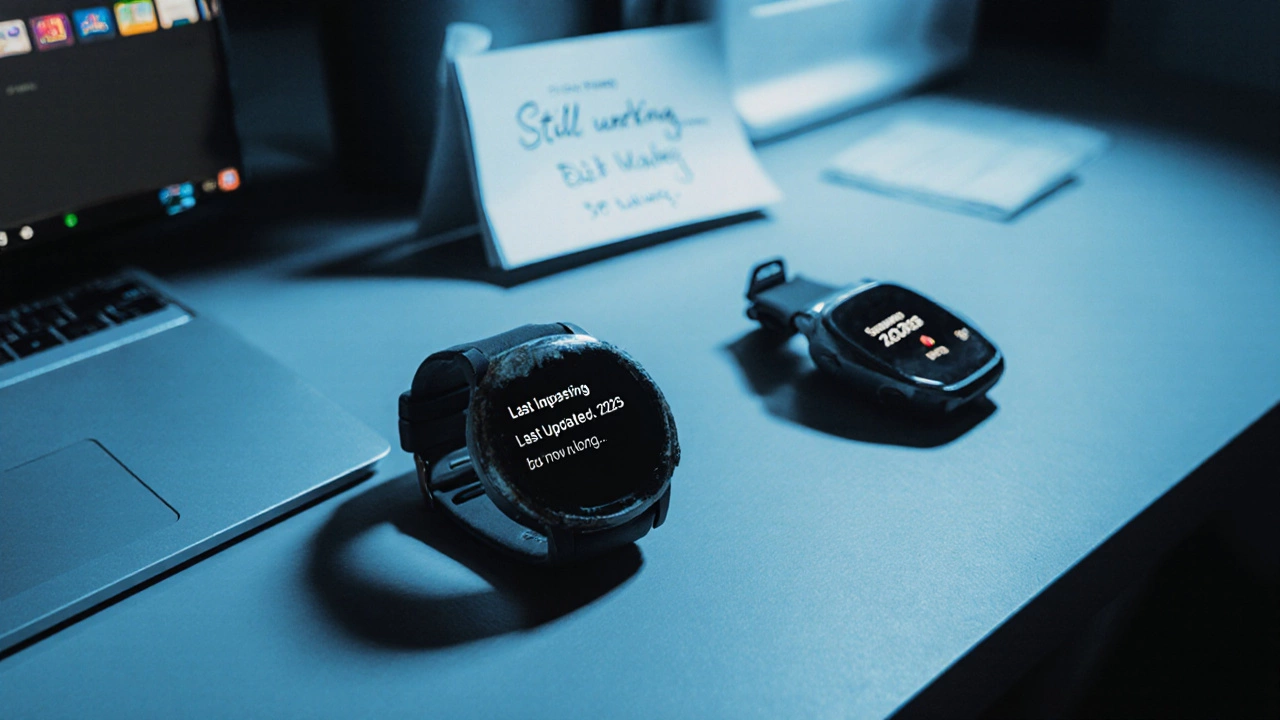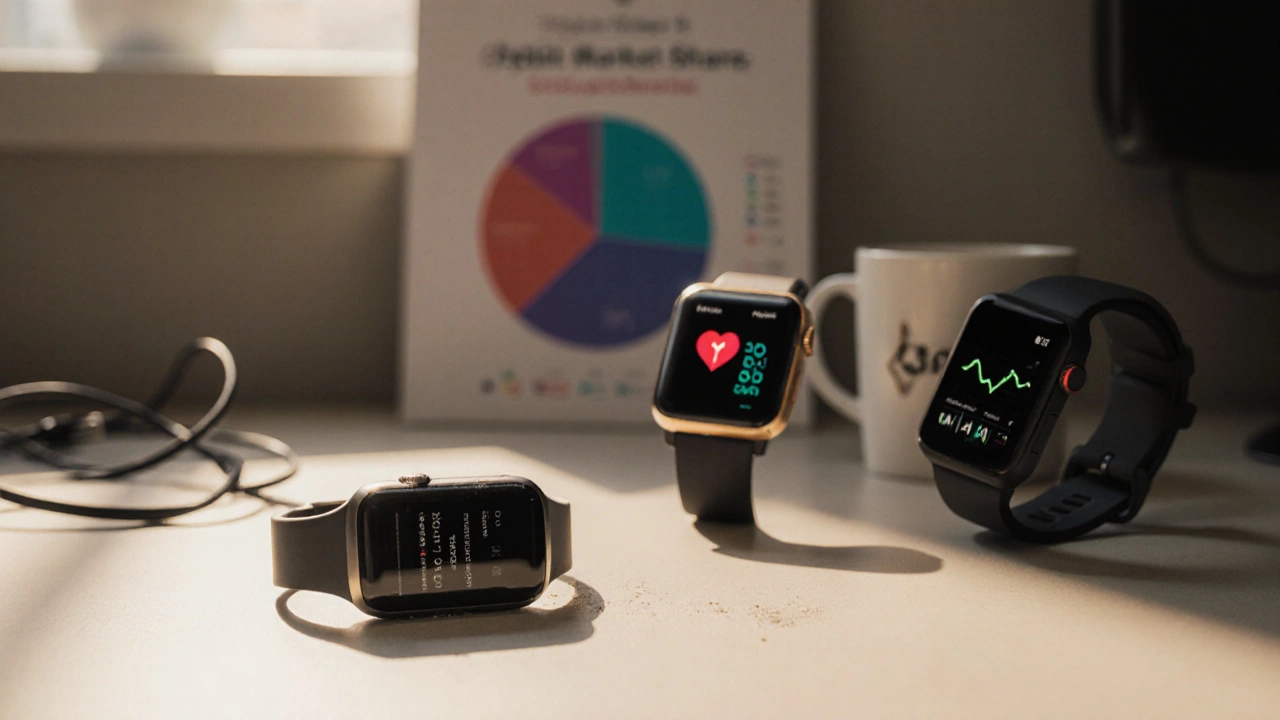If you’ve ever wondered whether a smartwatch or a simple step counter can actually change your routine, you’re not alone. Today’s fitness tech mixes sensors, apps, and sleek design to give you instant feedback on everything from heart rate to sleep quality. The best part? Most of these devices work straight out of the box, so you can start tracking right away without a tech degree.
Wearables keep the numbers you need in front of you, turning vague goals into clear targets. Want to hit 10,000 steps? Your tracker will buzz when you’re close. Trying to improve sleep? A Fitbit or similar device shows how long you’re in deep rest versus light snooze. The data isn’t just for bragging; it helps you spot patterns, like a dip in activity after a stressful day, so you can adjust quickly.
Many people think the radiation from smartwatches is dangerous. Current research shows the low‑level EMF emitted by most wearables is far below safety limits, but if you’re still uneasy, simply turn off Bluetooth at night or use a low‑radiation strap. Comfort is another common worry. Modern bands are made from soft silicone or breathable fabrics that stay snug without digging into your skin.
First, decide what you actually need. If you only want step counting and basic calorie estimates, a budget-friendly tracker like the Xiaomi Mi Band does the job. For heart‑rate zones, GPS routes, and call answering, look at more advanced smartwatches such as the Apple Watch Series 9 or the latest Fitbit Versa models.
Battery life also matters. Some devices can last a week on a single charge, while others need daily charging—especially if you use GPS or continuous heart‑rate monitoring. If you plan to wear it while you sleep, pick a model with a silent, quick‑charge system to avoid nightly interruptions.
Privacy is a hot topic after Google bought Fitbit. Most brands let you control what data is stored in the cloud, and you can delete everything anytime. Check the privacy settings before you sync, and consider using a local‑only app if you’re uncomfortable with cloud storage.
Got a smartphone? You don’t need a watch at all to log walks. Apps like Strava, Google Fit, or MapMyWalk turn your phone into a tracker, using GPS to map routes and count steps. This works well for occasional walkers who don’t want an extra gadget on their wrist.
When you finally pick a device, spend a few minutes customizing alerts. Too many vibrations can be annoying, but a gentle reminder to stand after an hour of sitting can improve circulation. Many users set a bedtime alarm that nudges them to start winding down, improving sleep consistency.
Remember, the tech is only a tool. The real change happens when you act on the insights—whether that means adding a quick 5‑minute stretch after a long meeting or taking the stairs instead of the lift. Use the data to experiment, not to judge yourself.
Fitness technology keeps evolving, but the core idea stays the same: give you clear, real‑time feedback so you can make smarter health choices. Pick a device that fits your lifestyle, tune the settings to suit you, and let the numbers guide you toward a healthier routine.
Fitness trackers count steps and sleep. Fitness watches monitor heart health, GPS, and stress. Learn which one actually fits your goals-not just your budget.
READFitness trackers promise better health but come with hidden risks: inaccurate data, privacy leaks, anxiety, skin damage, and medical misinformation. Learn how these devices can hurt more than help.
READ
Fitbit isn't disappearing, but Google has stopped releasing new models. Find out if your device still works in 2025, what's replacing it, and whether you should buy one now.
READExplore the real pros and cons of wearing a fitness tracker, learn when to quit, and discover practical alternatives and steps to transition safely.
READDiscover if a fitness tracker is worth your money in 2025. Learn core features, cost‑benefit analysis, top models, and buying tips for beginners and pros alike.
READ
Explore why Fitbit is rapidly losing market share, the missteps that caused its decline, and practical steps for current owners to transition to better wearables.
READ
Curious about smartwatch side effects? Evidence-backed risks, myths, and a simple safety routine. Learn about rashes, sleep, EMF, anxiety, and when to see a doctor.
READ
Curious if you can answer phone calls on your Fitbit? This guide dives into which Fitbit models support call answering, how to set it up, and real-life tips for easier smart living.
READ
Discover practical ways to track your walking sessions without relying on a wearable watch. Learn how your smartphone can serve as a fitness companion, explore various apps designed for activity tracking, and find tips on how to stay motivated in your walking routine. This guide is packed with easy solutions for anyone who wants to keep tabs on their exercise without investing in a smartwatch.
READAre activity trackers just the latest tech fad, or do they offer real benefits for everyday life? This article explores how a fitness tracker could help improve your health and daily habits. Discover practical tips, interesting facts, and whether it's really worth the investment for your lifestyle.
READ
Deciding whether to wear your Fitbit to bed involves balancing comfort and tracking benefits. These devices gather sleep data, providing insights into your sleep patterns. Consider the comfortable design of modern Fitbits and concerns about EMF exposure to make an informed choice. Explore the advantages of sleep tracking and tips to improve your sleep experience with a Fitbit.
READ
Fitbit, a renowned name in the wearable fitness tracker industry, was acquired by Google. This acquisition, completed in 2021, aimed to strengthen Google's position in the health and wellness market by integrating Fitbit's technology with Google's resources and expertise. The purchase has sparked discussions on privacy, innovation, and the future direction of fitness technology. Here, we explore the nuances of this acquisition, its implications for consumers, and what it means for the world of fitness devices.
READ